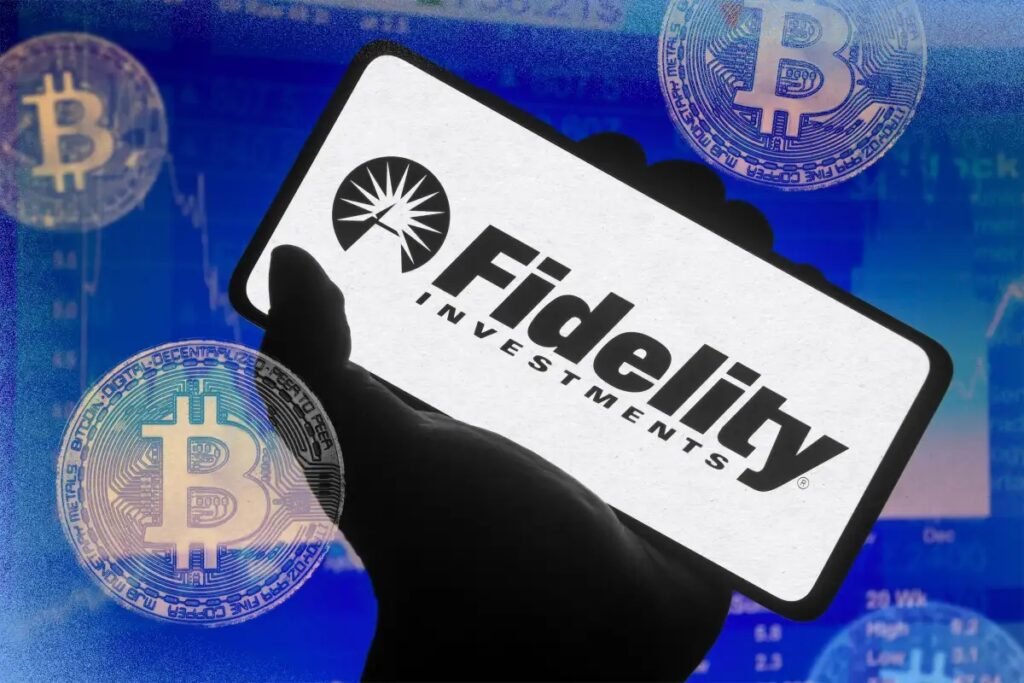Introduction: A Ripple in the Crypto Pond
The cryptocurrency world is no stranger to surprises, but when a financial giant like Fidelity makes a move, the market listens. Recently, Fidelity Investments, a powerhouse managing over $12 trillion in assets, sold a staggering $332.42 million worth of Bitcoin, sparking curiosity and concern among investors. Why would a firm so deeply invested in digital assets pull back? This article dives into the reasons behind Fidelity’s bold decision, its impact on the crypto market, and what it means for everyday investors like you. Let’s explore the forces at play and uncover the hidden dynamics driving this shift.

Why Did Fidelity Sell $332.42 Million in Bitcoin?
A Strategic Portfolio Rebalance
Fidelity’s sale of Bitcoin, amounting to over 5,000 BTC at a time when prices dipped below $59,000, wasn’t a spur-of-the-moment decision. The firm, known for its calculated approach, likely saw this as an opportunity to rebalance its portfolio. Institutional investors like Fidelity often adjust their holdings to manage risk, especially in a volatile market like crypto. By selling during a dip, Fidelity could be locking in profits or redirecting funds to other assets, such as AI-focused equities or altcoins showing promise.
Responding to Market Signals
The timing of the sale coincided with a broader wave of outflows from Bitcoin exchange-traded funds (ETFs), with Fidelity’s own Bitcoin ETF (FBTC) seeing significant activity. Market analysts suggest this move reflects a response to shifting investor sentiment. Bitcoin’s price, hovering around $59,300 after the sale, showed signs of recovery, but the sell-off sent a signal: even big players are cautious when the market wavers. This could be a hedge against potential corrections if Bitcoin fails to hold key support levels, like the $58,700 mark.

The Bigger Picture: Institutional Moves and Market Impact
A Maturing Crypto Market
Fidelity’s actions highlight a maturing cryptocurrency market. Unlike the early days of wild speculation, today’s market sees institutions like Fidelity making strategic moves rather than emotional ones. This sale doesn’t signal a lack of faith in Bitcoin but rather a pragmatic approach to portfolio management. As one analyst noted, “Fidelity’s sale is less about abandoning Bitcoin and more about navigating a choppy third quarter.” This shift suggests institutions are treating crypto like traditional assets, balancing risk and reward.
Ripple Effects on Bitcoin’s Price
Large sales by institutional players can create short-term price pressure, and Fidelity’s move was no exception. The market saw Bitcoin dip below $59,000, though it later stabilized. Investors are now watching the $58,700 to $70,000 range closely. If Bitcoin holds above this zone, it could spark renewed interest. However, a drop below might trigger further sell-offs, as smaller investors often follow the lead of giants like Fidelity.

What Does This Mean for Everyday Investors?
Should You Be Worried?
For the average investor, Fidelity’s sale might feel alarming, but it’s not a reason to panic. The crypto market is inherently volatile, and institutional moves often amplify short-term swings. Fidelity’s history shows a long-term commitment to digital assets, from launching its Bitcoin fund in 2020 to offering crypto-enhanced 401(k)s. This sale is likely a tactical adjustment, not a retreat from crypto.
Opportunities in Volatility
Volatility can be a friend to savvy investors. Fidelity’s sale could signal a chance to “buy the dip” if you believe in Bitcoin’s long-term potential. Historically, Bitcoin has recovered from dips, with prices soaring over 400% since its 2022 lows. However, caution is key—crypto is risky, and you should only invest what you can afford to lose.
Fidelity’s Long-Term Crypto Commitment
A Pioneer in Digital Assets
Fidelity isn’t stepping away from crypto. Since starting Bitcoin mining in 2014 and launching Fidelity Digital Assets in 2018, the firm has been a trailblazer. Its Bitcoin ETF, FBTC, remains a major player, holding over 205,488 BTC worth $19.21 billion despite recent outflows. Fidelity’s recent move to allow in-kind creations and redemptions for its ETF shows it’s doubling down on crypto innovation.
Education and Accessibility
Fidelity also focuses on making crypto accessible to everyday investors. Through its Fidelity Crypto platform, you can trade Bitcoin, Ethereum, and Litecoin for as little as $1. The firm offers educational resources like webinars and articles to help newcomers understand the market. This commitment suggests Fidelity sees crypto as a long-term opportunity, even if it means adjusting holdings now and then.

What’s Next for the Crypto Market?
Watching Institutional Trends
Fidelity’s sale is part of a broader trend. Other institutions, like BlackRock, have also seen ETF outflows, though less severe. Meanwhile, whale investors are buying the dip, with over 30,000 BTC flowing into accumulation addresses recently. This push-and-pull between selling and buying could define the market’s direction in 2025.
Regulatory and Market Shifts
With a new U.S. administration in 2025, crypto regulations could change, impacting investor confidence. Fidelity’s proactive adjustments might be a way to stay ahead of potential policy shifts. Investors should keep an eye on government statements and ETF flows for clues about the market’s future.

Conclusion: Navigating the Crypto Waves
Fidelity’s $332.42 million Bitcoin sale is a reminder that even giants make waves in the crypto market. While it may spark short-term volatility, it also reflects a maturing market where strategic moves are the norm. For everyday investors, this is a chance to learn from the pros: stay informed, manage risks, and think long-term. Whether you’re a crypto newbie or a seasoned trader, understanding these shifts can help you navigate the exciting, unpredictable world of digital assets.






















